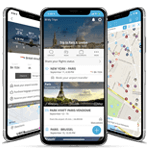Awarded Best Travel Software Company 2019
Africa
Caribbean
- Antigua & Barbuda
- Anguilla
- Aruba
- Barbados
- Saint Barthelemy
- Bermuda
- Bonaire St Eustatius
- Bahamas
- Curaçao
- Dominica
- Dominican Republic
- Grenada
- Guadeloupe
- Jamaica
- Saint Kitts and Nevis
- Cayman Islands
- Saint Lucia
- Saint Martin
- Martinique
- Puerto Rico
- Sint Maarten
- Turks & Caicos Islands
- Trinidad and Tobago
- Saint Vincent & Grenadines
- U.K. Virgin Islands
- U.S. Virgin Islands
Middle East
Europe
- Andorra
- Albania
- Armenia
- Austria
- Azerbaijan
- Bosnia and Herzegovina
- Belgium
- Bulgaria
- Belarus
- Switzerland
- Cyprus
- Czech Republic
- Germany
- Denmark
- Estonia
- Spain
- Finland
- Faroe Islands
- France
- United Kingdom
- Georgia
- Gibraltar
- Greenland
- Greece
- Croatia
- Hungary
- Ireland
- Iceland
- Italy
- Liechtenstein
- Lithuania
- Luxembourg
- Latvia
- Monaco
- Moldova
- Montenegro
- Macedonia
- Malta
- Netherlands
- Norway
- Poland
- Portugal
- Romania
- Serbia
- Russia
- Sweden
- Slovenia
- Slovakia
- San Marino
- Turkey
- Ukraine
- Kosovo
- Georgia

Package Management Distribution
It helps to manage predefined FIT and GIT packages with a combination of different components, services, categories, package type, and costs.
Trusted by World’s Leading Travel Brands
Package Management Distribution - Accelerate Your Global Travel Production
Manage Inbound and Outbound Packages with Ease

What is Distribution Management?
The administration of assets and procedures used to convey a product from a production location to the point-of-offer, including capacity at warehousing areas or delivery to retail distribution focuses.
Distribution management also includes the assurance of ideal amounts of a product for delivery to specific distribution centers or purposes of-offer to accomplish the most productive delivery to clients. Distribution management refers to the way toward managing the development of goods from the provider or maker to point of the offer.
It is a larger term that refers to various exercises and procedures, for example, packaging, inventory, warehousing, supply chain, and logistics.
Distribution Management is a significant part of the business cycle for merchants and wholesalers. The net revenues of organizations rely upon how rapidly they can turn over their products.
The more they sell, the more they procure, which implies a superior future for the business. Having an effective circulation the board system is likewise significant for organizations to stay focused and to keep clients fulfilled. Distribution management is basic to an organization's financial achievement and corporate life span.
Executing it effectively requires compelling management of the whole distribution process. The bigger an enterprise or greater the quantity of supply points an organization has, the more it should depend on automation to viably deal with the distribution procedure.
Role of Travel Distribution Technology Making Travel Easy?
Current distribution management incorporates something other than moving products from indicate A point B. It also involves gathering and sharing relevant information that can be used to identify key opportunities for growth and competitiveness in the market.
Most dynamic organizations currently utilize their distribution powers to get advertise insight which is essential in evaluating their competitive position.
There are two kinds of distribution: business conveyance (normally known as sales distribution) and physical dispersion (also called logistics).
The distribution includes various capacities, for example, client support, shipping, warehousing, inventory control, private trucking-armada activities, packaging, getting, materials taking care of, alongside the plant, distribution center, store area arranging, and the joining of data.
The objective is to accomplish extreme proficiency in delivering crude materials and parts, both in part and finished products to the ideal place and time in the correct condition. Physical distribution planning should line up with the general channel system.
Distribution Management as a Marketing Function
The fundamental idea is that as a marketing function, you now manage your distribution while considering all of the marketing ‘P’s. It isn't simply selling your product, yet it is selling your product while guaranteeing adequate inventories in channels, cautiously thinking about your advancements in those channels and their differing requirements.
It is guaranteeing that your inventory network is effective enough that your expenses to distribute are low enough and your product can be sold at the correct value, in this manner supporting your promoting procedure and expanding profit.
Indeed, even before considering about business or physical distribution, you would need to begin at the product itself, checking on its details and ensuring that it adequately handles a buyer's needs.
In considering distribution management as a promoting capacity, we step away from "supply-side reasoning" and start with a perspective all in all images, the purchaser now in the middle.
The Future of Travel Distribution
Any adjustments in the travel industry distributive systems might be stimulated by outside large scale factors, for example, legislative issues and trade, worldwide and national economies, mechanical advancements and access to them, etc.
The airline industry could be affected by increased competition from low-cost carriers, new mergers and acquisitions, and fuel costs, among other issues. However, the business future of the travel industry may likewise be affected by different components, including travel dispersion.
The travel industry organizations can turn out to be much increasingly successful by the way they sell their products and services; especially on the off chance that they deliver positive client experiences. Tourists see an incentive in client-driven organizations.
Most probably, in the future, there will be significant improvements in terms of technologically enhanced customer services. Tomorrow's organizations will serve travelers from geologically in various regions. There will be more travelers from emerging markets and developing economies.
The travel distribution systems will have to cater to senior citizens, as there are aging populations in many countries. The distributive channels must be designed to accommodate the divergent nature of users.
Tourism service providers and their intermediaries will be expected to provide engaging, intuitive shopping experiences that tap into the traveler’s discretionary purchases.
The travel businesses will need to embrace new technologies and flexible distribution processes; as outmoded distribution components will be replaced. It is envisaged that new distributive systems will be relying on mobile devices as these technologies enable consumer interaction with speech and voice recognition software.
Tourism businesses could leverage themselves with artificial intelligence. They may facilitate their dynamic pricing, as well as personalization of services.
The distributive systems could interface with computer-generated reality software to assist organizations with marketing their items in charming client encounters.
How does the distribution system work?
Online technology and company mergers have transformed the tourism industry, with an increasing amount of crossover in the roles and functions of various sectors of the distribution system. Organizations draw in a blend of distribution accomplices to arrive at their objective shoppers.
The traditional structure of the distribution system includes Inbound Tour Operators (ITOs) based in world tourism industry; wholesalers based overseas and international retail travel agents.
However, this varies considerably from market to market. For example, it isn't exceptional for an inbound tour operator to be a part of a bigger organization that may likewise work a discount arm in an abroad market, or for a distributor to likewise work the travel offices that sell its packages.
Numerous conventional travel merchants, for example, wholesalers and travel agents adopt an online strategy just as offering their services from a retail shop front.
Both on the web and customary dispersion accomplices have the chance to work with one another and legitimately with products and customers.
As the traditional distribution system continues to evolve, it is important to clearly understand the structure of the companies that you work with and their relationships with other organizations.
Inbound tour operators
An inbound tour operator (ITO), also known as a ground operator or destination management company (DMC), is the business that provides itinerary planning and product selection, and coordinates the reservation, confirmation and payment of travel courses of action for the benefit of their abroad customers.
They bring the parts of accommodation, visits, transport, and suppers together to make a completely comprehensive schedule. ITOs are the connection between the travel industry products and the abroad travel merchants that buy them, including travel wholesalers, direct venders, travel agents, meeting organizers, and occasion organizers.
Online travel agents
Online travel agents (OTAs) specialize in online distribution and have no intermediaries – they deal directly with consumers and tourism product. Buyers can purchase a product or a whole vacation package on the web. Online distribution is less organized than the customary travel distribution system. Commission levels vary, depending on how the site is operated.
Factors influencing Distribution Management
Customer Perspective
The ideal situation for any retailer or manufacturer is to have just enough inventories on hand to sell or to keep production lines running smoothly.
These clients wish to hold as little stock as conceivable without running out.
Since most customers require a few different items, each sold or utilized at an alternate pace, anticipating the product blend turns into an indispensable part of their condition.
Extra factors, for example, deals advancements at the retailer or regular inventory build by the producer, can make determining troublesome.
Distributor Perspective
The ideal condition for dissemination management is to have all completely stacked trucks working on normally planned courses 100% of the time with a 100% wellbeing record.
Since the client deals back and flow in actual life, accomplishing this perfect goal is difficult.
In some circumstances, temperature control and another special handling can further complicate the issue.
Additionally, a compelling circulation and warehousing organization endeavors to keep up the ideal inventory with their providers to keep inventory management costs at a sensible level without over the top security stock.
However, with the correct arranging and execution, distribution management can adequately relieve these appearing to be contradicting difficulties.
Communication
Running out of product or parts is the customer’s worst nightmare. Distribution management must guarantee the correct progression of data, determining, and exact, safe, and timely deliveries are given.
In some scenarios distributors are provided real-time sales information electronically to replenish inventories automatically without traditional ordering.
This kind of transparency permits each connection in the store network to envision the necessities of the end customer and to alter their inventory levels and organize conveyances in like manner.
In these situations, the client will likewise give progressing forecasts.
In different cases, open and nonstop communication with the client will assist the merchant with anticipating inventory recharging, plan gear and staff for delivery.
Planning & Measuring: Creating a Culture
The initial phase in readiness is to build up a client-centered strategic organization culture that mixes the significance of consumer loyalty with the substances of business gainfulness.
Measure each component of the business from anticipating, acquisition, inbound cargo the board, warehousing, and inventory control to arrange preparing, load combination, delivery scheduling, and backhauls.
Working directly with representatives in each discipline, search for approaches to make each process more proficient.
Key contemplations are process duration, cost analysis, on-time deliveries, precise request satisfaction, and wellbeing estimations.
Make an arrangement with possibilities for each circumstance and guarantee that all staff has contribution to making arrangements reasonable.
Training & Commitment
Preparing representatives to execute the necessities of a dispersion organization is more than clarifying and demonstrating "how" to play out a capacity. Hidden effective performance is a consequence of people getting "why" a vocation should be done well and the potential implications of terrible showing to the organization's future.
The way to better distribution management is than help new staff becomes acquainted with all parts of the activity to have the option to settle on wise and autonomous choices later on.
Implementing the Right Tools: Warehousing and Distribution
Inventory management and warehouse management system (WMS) software can help to optimize space within a warehouse.
By boosting existing space, organizations can prevent costly extensions and make progressively proficient inventory positions.
Thus, with stacking and steering software, wholesalers can enhance vehicles and drive costs.
These instruments fuse load amounts and target appearance times with separation and drive time. Improving the armada is a generous cost driver for a fruitful distribution management organization.
Trawex Packaging Management Distribution
Trawex provides an advanced package management system for the global travel & tourism industry that helps to manage inventory and group travel, create a package, manage customers and travel agents, improve your service requesting, completely robotize your business procedure, oversee records and addition full bits of knowledge into your travel business.
Our package management system allows travel agencies, tour operators and travel companies to easily handle predefined FIT packages by utilizing a combination of numerous services.
It includes offering travel services to free guests through different mediums and causes them in arranging modified occasions, for example, slope stations, adventure tours, family occasions, and so on.
Trawex offers package management software to the travel industry which is designed to automate and organize all aspects of tour management, improving efficiency, package management, traveler and vendor communications and bringing down the cost and time to work your visit business.
We give a powerful package that causes make a travel organizations to get to the greatest scope of travel offers that can be reserved together as one visit or vacation package, including flight, hotel, vehicle, and other travel services.
Trawex offers package management distribution systems to manage predefined FIT and GIT packages for outbound tour operators, domestic tour operators, and DMCs.
Clients can check accessibility, reserve a spot and get a confirmation whenever. This allows your travel business to take secure bookings 24x7 from around the world.
Trawex dynamic Packaging system
Dynamic packaging is a system utilized in package event arrangements to draw in customers to make their bundle of flights, settlement, and vehicle rental as opposed to obtaining a pre-depicted package.
Dynamic packages vary from customary package visits in that the estimating is constantly founded on current accessibility, accompanied gathering visits are once in a while included and travel-explicit additional items, for example, air terminal stopping and show passes are regularly accessible.
Dynamic packages are comparable in that regularly the air, hotel, and vehicle rates are accessible just as a major aspect of a package or just from a particular merchant.
The expression "dynamic packaging" is frequently utilized incorrectly to depict the less modern procedure of trading different travel segments inside a bundle; be that as it may, this training is all the more precisely described as "dynamic packaging".
Genuine dynamic packaging demands the robotized recombination of travel segments dependent on the incorporation of principles that direct the substance of the package as well as restrictive valuing standards dependent on different conditions, for example, the trip qualities, providers contributing parts, the channel of distribution, and terms of the offer.
Dynamic packages are primarily sold on the web, yet online travel offices will likewise sell by telephone owing to the solid edges and high sale cost of the item.
Dynamic packaging has been presented as a creative technology taking into consideration the computerized online arrangement and assembling of packaged travel items for individual clients.
Because of the high level of autonomy and heterogeneity of the travel industry data systems, dynamic packaging systems can't be effectively created by considering just syntactic and basic mix of information.
One significant viewpoint that should be examined to build up another type of dynamic packaging system is semantic heterogeneity to reduce the potential failures that may happen when incorporating the travel industry data systems.
Our goal is to build up a stage to empower the advancement of dynamic packaging frameworks utilizing the most recent semantic advances, for example, knowledgebase, ontologies, and semantic Web.
With the development of interest for customized travel industry schedules, travel agents, visit administrators, and delegates look for new technologies that give their faculty and customers the adaptability to assemble one of the kind powerful packages from a scope of choices, without monitoring the multifaceted design of agreement standards and estimating issues.
With conventional applications, travelers must visit physically various autonomous Web destinations to design their excursions or vacations, register their data on various occasions, go through hours or days waiting for reaction or confirmation, and make numerous payments with credit cards. Customers are discouraged with the absence of usefulness.
They are requesting the capacity to make, oversee and update schedules. With dynamic packaging technology, travelers can manufacture altered trips that join client preferences with flights, vehicle rentals, hotels, and relaxation exercises at a solitary cost.
Dynamic packaging empowers buyers (or booking operator) to fabricate an altered schedule by collecting numerous segments of their decisions and complete the exchange in real-time.
Dynamic packaging depends on an individual buyer demand, including the capacity to consolidate, different travel segments like flights, hotels, vehicle rentals, and some other the travel industry related part continuously and gives a solitary, completely evaluated package, requiring just a single installment from the shopper and concealing the pricing of individual segments inside 5-15 seconds.
The products available to the customer can be stored in local inventories or external sources.
Dynamic packaging is dynamic at a few levels. Initially, inventory is sourced powerfully, which means the dynamic packaging arrangement will source flights, settlement and vehicle rental segments for the package progressively. Besides, these parts are powerfully consolidated into packages.
Thirdly, the package is progressively estimated and is typically given an opaque complete cost.
Static bundles can be characterized as fixed parts that segment costs don't vary as indicated by customer input and business rules. The package date can be flexible but the package components are static.
Then again, dynamic packages can be characterized as adaptable segments that their segment costs can change as per client information and business rules. Other than package dates, in powerful packages, package parts can be changed also.
One of the arms of the semantic web can be found in the travel industry as unique packaging applications. Dynamic packaging is one of the most significant advancements in online travel offices. The application was first begun by Expedia, and today it is received and connected by numerous online travel organizations.
Dynamic packaging furnishes buyers to arrive at numerous administrations with a single search. Along these lines, buyers can get a lower cost than they buy every free segment separately. Simultaneously, dynamic packaging gives providers to conceal their markdown rates.
In advance, while shoppers were making a travel arrangement, they needed to visit numerous free sites, to enter their private data commonly, to trust that hours or days will get an answer or confirmation, and to make the payment on many sites with their Visas.
Purchasers were discouraged by these badly arranged conditions.
Today, purchasers need to have the option to compose, oversee and update their vacation programs. By methods for the dynamic packaging technology, customers can join their determinations in flight, vehicle rental, hotel, and entertainment benefits under a solitary cost.
If customers change date or spot or both of their vacation designs, the site can offer different alternatives at various costs to the buyers continuously. This is the thing that makes a site and occasion packages dynamic. Dynamic packaging application enables customers to package travel parts.
The advantages of dynamic packaging
It is possible to mention the various advantages of dynamic packaging.
The main advantages of dynamic packaging can be investigated in two different aspects: customers and wholesalers. When we approach the consumer aspect, consumers can organize their travel packages through dynamic packaging.
While they compose their vacation, they can easily remove the dispose of the components that they are not interested in.
Instead of purchasing different travel choices individually, consumers can purchase the whole package at a lower cost in this way. Dynamic packaging gives consumers the perception that they are in control of the process.
Purchasers can make their determinations among travel items provided by various specialist organizations.
Consumers can plan and purchase their holidays through one web site. Besides, consumers don’t have to adapt fixed dates such as fixed packages.
When we approach the wholesalers' viewpoint, one of the upsides of the dynamic packaging is that it is increasingly helpful to think about various sorts of services progressively.
This application provides to give best available price to the consumers. Wholesalers can package different services under a solitary reservation.
Wholesalers are allowed to expand product choices and to decrease their overhead costs. Dynamic packaging provides a greater range of products and profit margins as well.
At the same time, wholesalers can increase their market share. Dynamic packaging allows a wholesaler to hide the price of each service because consumers are given the wholesale prices.
Why work with travel distributors?
Travel wholesalers enable you to widen your client base a long ways past the range of your own advertising spending plan.
They are essential to the inbound the travel industry as abroad consumers still intensely depends on the counsel of nearby travel agents when arranging and booking their vacation, especially in long-haul and developing markets.
Travels wholesalers can likewise give advertise knowledge, bits of knowledge, and guidance on a particular market.
The travel distribution system covers all the channels through which an international traveler can buy your product.
| Last reviewed on | March 17, 2025 |
|---|---|
| How we reviewed this article | We update our articles when new information becomes available. |
| Current version | March 17, 2025 |
| Written By | Kristeen Cherney |
What We Offer
Trawex platform currently empowers 1000+ customers across 4 continents, 10000+ bookings a day, 1000000+ travel searches a day, across 200+ Suppliers, 600,000+ Hotels, 1000+ Airlines, 200,000+ Activities, 30,000+ Cruise Itineraries and much more for your brand.
Inventory Consolidation
Instant integrations with more than 100 suppliers that are integrated on demand.
Travel APIs
A complete set of travel APIs that empower our clients to develop custom travel solutions.
Custom Modules
A production-ready library of Modules that can be used as is or customized as per your requirement.
Faster Time to Market
Integrate suppliers in matter of few days. Over 100 suppliers maintained.
-
![B2C Travel Technology | Online Booking Software | Travel Website Development B2C Travel Technology | Top 10 Travel Technology Providers | Travel Business Software | Top 10 Travel Technology Companies | Online Booking Software | Travel Website Development]()
Travel Portal
Development -
![Travel Technology | Travel Business Software | Online Booking Software | Travel Website Development Travel Technology | Top 10 Travel Technology Providers | Travel Business Software | Top 10 Travel Technology Companies | Online Booking Software | Travel Website Development]()
Travel APIs
Dummy Text -
![Travel Technology XML Integration | Travel Business Software | Online Booking Software | Online Travel Portal Development Travel Technology XML Integration | Travel Business Software | Top 10 Travel Technology Providers | Top 10 Travel Technology Companies | Online Travel Portal Development]()
White Label
Travel Websites -
![B2B Reservation Platform | Travel Business Software | Online Booking Software | Online Travel Portal Development B2B Reservation Platform | Travel Business Software | Top 10 Travel Technology Providers | Top 10 Travel Technology Companies | Online Travel Portal Development]()
B2C / B2B
Booking Engines -

Itinerary Planner
-
![Travel Technology | Travel Business Software | Online Booking Software | Online Travel Portal Development Travel Technology | Travel Business Software | Online Booking Software | Online Travel Portal Development]()
BackOffice Solutions
Dummy Text
How We Engage

We Help Your Own Developers
- Third Party API Integrations
- Own Inventory Management System
- Offer your Customers Unparalleled Content
- Fully Managed Service
- Comprehensive travel inventory management system




Customized Hosted Solution
- Third Party API Integrations
- Own Inventory Management System
- Offer your Customers Unparalleled Content
- Fully Managed Service
- Comprehensive travel inventory management system


Off The Shelf
- Pre-integrated suppliers to provide the best inventory and prices
- Comes with Trawex APIs to build websites and apps in a fraction of time
- World Renowned Reliability
- Faster Time To Market
- Best user experience with 99.9% uptime

Grow Your Business with a Powerful Online Engagement Platform and Experienced Travel Partner
You won't be going on the engagement journey alone. We're there as a partner to help, support and advise to ensure your ultimate success.
- Online travel booking engine
- Multiple sales channels - B2B, B2B2B, B2B2C
- Centralised mid-office
- Ability to connect multiple GDS, LCC, and third party APIs
- Complete Reservation Management
- Travel Agent Management
- Transactional Accounting
- Accounting System Integration
- Comprehensive system to manage rates, discounts and allocation
- Payment Gateway Integration
- Multiple Supplier APIs
- Add direct contracts
- Redistribution API
- Configure credit limit and deposits
- Multilingual travel websites
- Add offline travel bookings
- Distribute white labels
- Dynamic fare caching
- Commissions and markup control
- Advanced Reports
- Manage multiple branches
- Sub Agents can create and manage multiple branches and users
- Optional cross selling platform
- SMS gateway
- Multi currency transactions for agents and suppliers
- Business intelligence reports
Skyrocket your business growth with Trawex
-
Our products empower Retail Sales.
-
Analyzing your requirements, fulfilling your business objectives and providing
you the right solution. -
Our engineering team has a relentless focus on delivering a scalable and reliable
technology platform. - Choose the right travel technology development service that fits your needs and business goals.
- We Deliver the best of our firm to every client as cost effectively as we can.
-
We are excited about building strong relationships with everyone and we provide
world class Support to our customers.






